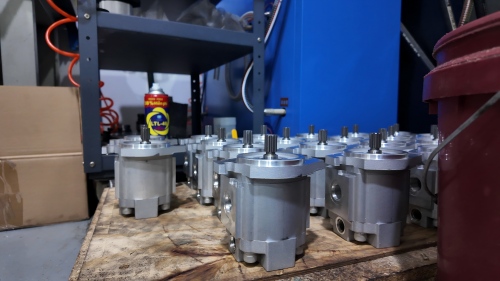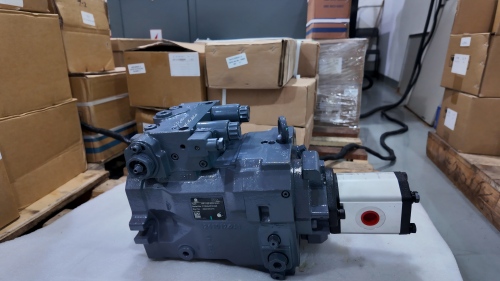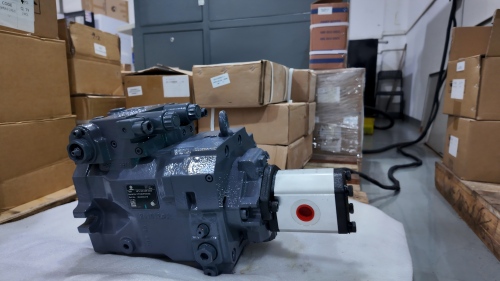Menu
Hydraulic cylinder failures cost industries millions in downtime annually, with fluid contamination accounting for 41.1% of failures and improper maintenance responsible for 12.6% (Source: mdpi.org, 2021). The piston—a critical component converting hydraulic pressure into linear motion—sits at the heart of these failures. Knowing precisely when to replace it separates planned maintenance from catastrophic breakdowns.
This guide cuts through the confusion surrounding piston replacement timing. Whether you’re managing a construction fleet or maintaining agricultural equipment, the decision to replace versus repair a hydraulic cylinder piston directly impacts your budget, safety, and operational efficiency. We’ll examine diagnostic indicators, cost implications, and proven decision frameworks backed by industry data.

Hydraulic cylinder pistons don’t fail overnight. They exhibit predictable wear patterns that signal replacement needs long before complete failure occurs.
Well-designed hydraulic cylinders can last 20 years or longer when properly maintained (Source: fluidpowerworld.com, 2024). The cast iron or aluminum piston experiences gradual wear through constant contact with the cylinder bore during operation. Light surface scratching poses minimal risk as long as the piston’s nominal bore diameter doesn’t exceed the minimum diameter specification.
However, critical damage manifests differently. Side loading causes uneven wear where the piston drags with excessive force across one section of the barrel. Up to 25 percent of mechanical equipment failures are design-related, suggesting one in four cylinders aren’t adequately designed for their application (Source: machinerylubrication.com, 2006).
Contaminated hydraulic fluid contributes to 41.1% of cylinder failures (Source: mdpi.org, 2021). Abrasive particles trapped in fluid act like sandpaper against the piston surface. Even particles smaller than a human hair can score the piston and cylinder bore with each stroke cycle. This accelerated wear pattern demands immediate attention.
Metal chips from other system components create the most severe piston damage. They embed in the piston surface and slice new grooves during every extension and retraction cycle.
Recognizing these warning signs prevents costly emergency repairs and dangerous equipment failures.
Inspect your piston during routine maintenance for:
A hydraulic repair facility in Australia recently documented a case where a two-piece piston came apart and wedged against the cylinder tube’s inside diameter, causing complete system failure (Source: peninsularcylinders.com, 2023). The technicians discovered this only after cutting open the cylinder barrel.
Internal leakage occurs when hydraulic fluid bypasses the piston seals. Testing reveals the problem:
Mid-Stroke Bypass Test: For cylinders with a 2:1 ratio of piston to rod side area, pressurizing the rod side to 3,000 PSI should read 1,500 PSI on the piston side gauge (Source: machinerylubrication.com, 2006). Failure to maintain this differential pressure indicates piston seal or tube problems.
If replacing seals doesn’t resolve the leakage, the piston itself may be scored, warped, or oversized from wear.
Performance degradation signals internal component failure:
Side loading remains the most common cause of cylinder wear and failure, creating unusual force on the piston rod and uneven piston drag (Source: hydrauliccylindersinc.com, 2025). This manifests as jerky motion or binding during the stroke.
Seals are the most easily damaged cylinder component and can fail due to scratched piston rods, heat breakdown, contaminated fluid, or pressure spikes (Source: mdpi.org, 2021). When you’re replacing piston seals every 6-12 months instead of the typical 2-3 year cycle, the piston surface has likely degraded beyond acceptable tolerances.
A rough or scored piston accelerates seal deterioration. The seal replacement becomes a temporary fix masking the underlying piston damage.
Hydraulic systems require precise internal pressure control. When pressure variations exceed manufacturer specifications despite proper system settings, internal component wear is the likely culprit. The piston may have lost its ability to create an effective seal against the cylinder bore.
Cost analysis determines whether piston replacement makes financial sense or if complete cylinder replacement offers better value.
For typical cylinder repairs, seal replacement kits range from $60 to $100, with labor costs of $120 to $160 per hour (Source: justanswer.com, 2024). Most shops charge a flat rate for approximately 2 hours of labor (Source: justanswer.com, 2024), bringing simple seal replacement costs to $300-$420 total.
However, piston replacement requires more extensive work:
Hydraulic cylinder rebuilds frequently cost over £1,000 ($1,250 USD) (Source: hemsltd.com, 2023), depending on cylinder size and damage extent.
Consider complete cylinder replacement when:
Age Factor: If your cylinder has exceeded its working life and requires piston replacement plus additional major component work, replacement becomes more economical. With proper maintenance, primary components like the head, cap, and tie rods rarely need replacing, while the piston rod and barrel can be refreshed with chrome application (Source: fluidpowerworld.com, 2024).
Multiple Component Failure: When the piston, cylinder bore, and rod all show damage, repair costs can exceed 70-80% of new cylinder costs. At this threshold, replacement provides better long-term value.
Downtime Costs: The hydraulic cylinder market reached $15.7 billion in 2024 and is expected to grow at 4.6% CAGR through 2034 (Source: gminsights.com, 2025), driven partly by industries recognizing that equipment downtime often costs more than the repair itself.
Strategic maintenance dramatically extends piston service intervals and prevents premature replacement.
Maintaining clean and contamination-free hydraulic oil is the single most important maintenance task within a hydraulic system (Source: cylindersinc.com, 2024). Implement these practices:
A service interval of 10,000 hours (approximately 14 months) is generally recommended for piston pumps (Source: valmet.com, 2020). For cylinders:
Monthly:
Annually: Conduct thorough inspections at least annually, with more frequent checks for cylinders in high-use or critical applications (Source: cylindersinc.com, 2024). Annual maintenance should include:
3-5 Years: Complete cylinder overhaul including replacement of all seals, wear rings, and bearings, plus full system flush and hydraulic fluid replacement (Source: cylindersinc.com, 2024).
Side loading—when force is applied perpendicular to the cylinder’s intended direction—accelerates degradation and can lead to catastrophic failure (Source: cylindersinc.com, 2024). Ensure:
Follow this diagnostic procedure to make informed replacement decisions.
Start with baseline performance measurements:
Compare results against manufacturer specifications or previous baseline measurements.
With the cylinder depressurized and removed (if possible):
Uneven wear on one side of the piston rod strongly indicates misalignment, bent rod, excessive lateral loading, or internal damage (Source: cylindersinc.com, 2024).
If initial tests suggest problems:
Standard clearances typically range from 0.001″ to 0.005″ depending on cylinder size. Clearances exceeding 0.005″ usually require piston replacement.
Use this framework to determine action:
Replace Piston When:
Repair/Resurface When:
Replace Entire Cylinder When:

These errors turn straightforward replacements into expensive failures.
Simply replacing a damaged piston without addressing why it failed guarantees repeated problems. A mining contractor experienced a double-acting cylinder that wouldn’t extend or retract, discovering a two-piece piston had separated (Source: peninsularcylinders.com, 2023). The separation resulted from a previous repair oversight, not normal wear.
Always investigate:
Replacing the piston seal only without addressing an oversized barrel is often a short-term fix requiring more maintenance and costs long-term (Source: hydraulicsonline.com, 2024). An oversized or ballooned bore allows new pistons to leak immediately, wasting your investment.
Measure the bore diameter at multiple points along its length. Variations exceeding 0.003″ or out-of-round conditions demand bore honing or cylinder replacement.
Using aftermarket pistons with OEM seals (or vice versa) creates compatibility problems. Material hardness, surface finish, and dimensional tolerances must match for optimal performance. Stick with matched component sets from reputable manufacturers.
New pistons require proper break-in:
Rushing this process damages new components and voids warranties.
Different applications create unique piston replacement demands.
Construction equipment accounts for 35.81% of hydraulic cylinder market revenue (Source: grandviewresearch.com, 2024). Heavy-duty applications involving excavators, loaders, and dozers subject pistons to extreme conditions:
Construction cylinders often require piston replacement every 5,000-8,000 operating hours despite proper maintenance.
Farm equipment operates in highly contaminated environments with seasonal heavy use. Rising industrial automation across agriculture is increasing demand for reliable hydraulic cylinders (Source: gminsights.com, 2025). Agricultural pistons face:
Inspect agricultural equipment pistons before each growing season and replace at the first sign of degradation.
Material handling and forklifts record the highest 7.23% CAGR growth through 2030 (Source: grandviewresearch.com, 2024). These applications demand consistent performance:
Manufacturing cylinders often achieve 15,000-20,000 hours between piston replacements when properly maintained.
Modern diagnostic tools improve piston replacement timing accuracy.
IoT-enabled hydraulic systems now offer real-time monitoring:
The hydraulic equipment industry is experiencing significant transformation driven by digitalization, with electronics for intelligent mobility and data collection sensors becoming increasingly standard (Source: mordorintelligence.com, 2025).
Non-destructive ultrasonic testing detects:
This technology allows predictive replacement before catastrophic failure.
Regular oil analysis reveals piston condition without disassembly:
Fluid analysis costs $25-50 per sample but can prevent $1,000+ emergency repairs.
Replace seals first if the piston surface appears smooth and undamaged during visual inspection. If seals fail again within 6-12 months, or if you notice scoring, pitting, or dimensional changes in the piston, replacement becomes necessary. Measure the piston diameter—if it’s reduced beyond minimum specification or clearance with the bore exceeds 0.005″, replace the piston.
Properly maintained hydraulic cylinders can last 20 years or longer (Source: fluidpowerworld.com, 2024). However, pistons in high-duty cycles may need replacement every 5,000-15,000 operating hours. Lifespan depends on operating environment, maintenance quality, fluid cleanliness, and proper system design. Construction equipment typically sees shorter intervals than controlled manufacturing applications.
Yes, if the cylinder bore, rod, and other components meet specifications. However, replacing only the piston seal without identifying and correcting underlying issues like bent rods or worn guide bushings often provides only a short-term fix (Source: hydraulicsonline.com, 2024). Always inspect and measure all components during disassembly.
Hydraulic cylinder rebuild costs range from a few hundred to several thousand dollars (Source: cylindersinc.com, 2024). For a typical cylinder, repair kits cost $60-$100 with labor at $120-$160 per hour for approximately 2 hours (Source: justanswer.com, 2024). Piston-specific replacement adds $100-500 for the component plus additional labor, bringing total costs to $400-800 for standard cylinders.
No. A worn or ballooned cylinder tube can be tested using a mid-stroke bypass test (Source: machinerylubrication.com, 2006). If bore wear exceeds 0.005″ oversize or shows significant ballooning, the bore requires honing or the cylinder needs replacement. Installing a new piston in a worn bore creates immediate leakage and wastes your investment. Address bore condition before piston replacement.
The primary causes include fluid contamination (41.1% of failures), improper maintenance (12.6%), outsourced parts quality issues (10%), and physical damage (6.5%) (Source: mdpi.org, 2021). Side loading, excessive pressure, extreme temperatures, and corrosive environments also accelerate piston degradation. Identifying and correcting the root cause prevents repeated failures.
While technically possible, this approach creates new problems. Oversized pistons require bore machining to specific tolerances and matching seal sets. Most hydraulic shops recommend bore honing to restore original dimensions or cylinder replacement over the complexity and cost of custom piston fabrication. The engineering and machining costs often exceed new cylinder prices.
Maintaining clean, contamination-free hydraulic oil is the most important maintenance task (Source: cylindersinc.com, 2024). Additionally: replace filters before they clog, maintain proper fluid levels, ensure correct system pressure, align cylinders properly, avoid side loading, inspect regularly for leaks, protect rods from corrosion, and follow manufacturer maintenance schedules. These practices can triple piston service life.
Use this checklist to ensure thorough evaluation and proper replacement procedures:
Before Replacement:
During Replacement:

After Replacement:
The decision to replace a hydraulic cylinder piston balances technical assessment with economic reality. Armed with proper diagnostic procedures, cost analysis, and maintenance knowledge, you can make informed choices that maximize equipment uptime while controlling expenses. Remember that early detection through regular inspection prevents emergency replacements and their associated premium costs.